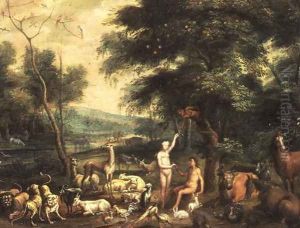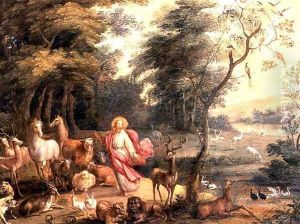Gillis II Congnet Paintings
Gillis II Congnet, also known as Aegidius Congnet, was a Flemish Renaissance painter born around 1542 in Antwerp, a city that was then part of the Habsburg Netherlands. Little is known about his early life and training, but he is believed to have been a pupil of the landscape painter Pieter Coecke van Aelst. Congnet's work is characterized by its meticulous detail, vibrant color palette, and often intricate compositions that were influenced by the Italian Renaissance and Mannerism, reflecting the cultural exchanges between Italy and the Low Countries during that period.
Congnet became a master in the Guild of St. Luke in Antwerp in 1561, which was the city's guild for painters, sculptors, and other artists. His career flourished in Antwerp, but by the 1570s, due to religious turmoil and economic decline in the region, he moved to Spain. There, he worked for the Spanish court and became known for his portraits and religious compositions. Congnet's style adapted to his new environment, and he gained recognition for his ability to blend Northern European techniques with the demands of Spanish patrons.
Despite his success in Spain, Congnet returned to Antwerp in the 1580s, where he continued to paint and also engaged in the printmaking business. He produced a number of engravings that contributed to his income and reputation. His works from this period continued to reflect the influence of Italian Mannerism, but also began to incorporate aspects of the emerging Baroque style.
Gillis II Congnet's death is recorded in 1599 in Antwerp. Although not as widely known today as some of his contemporaries, Congnet's work is represented in several European museums, and he is considered an important figure in the transition from the Renaissance to the Baroque period in Flemish art. His paintings are particularly noted for their elegance, refined technique, and the fusion of Northern and Southern European artistic traditions.

